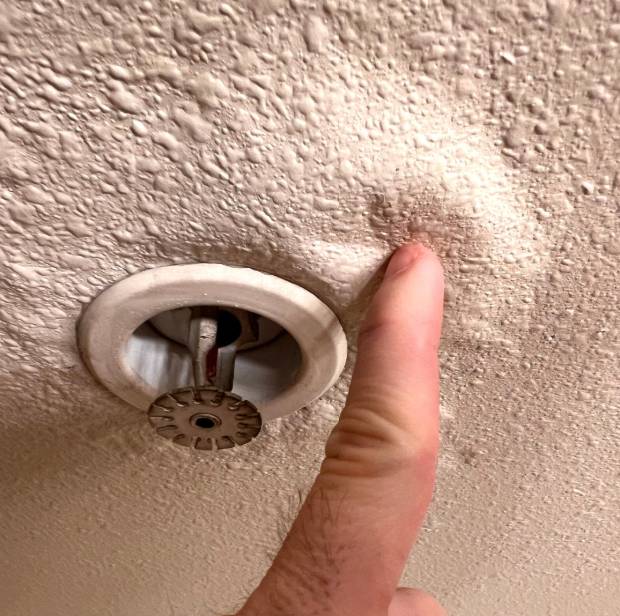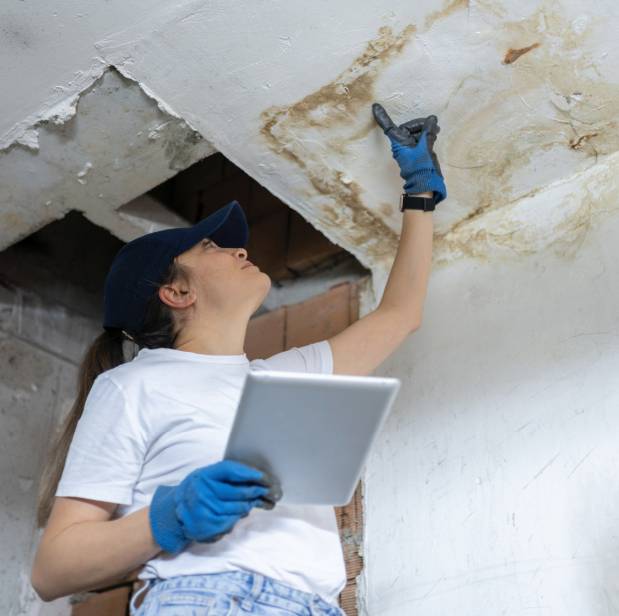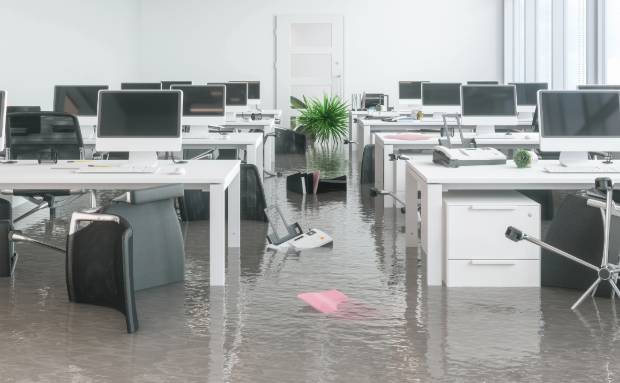Water damage refers to the various types of harm that water intrusion can cause to a building or its contents. In a commercial setting, water damage can result from several sources, such as leaks, flooding, or burst pipes. It is crucial to understand these potential risks to prepare and protect your property. The consequences of water damage are not limited to physical deterioration; they can also result in financial losses, disruptions to operations, and health risks due to mold and mildew growth.
Common Causes of Water Damage
- Leaky Roofs: A damaged roof can allow water to seep into the building, damaging ceilings, walls, and equipment. Regular inspection and maintenance of the roof can prevent minor issues from escalating into major problems. Ensuring gutters and downspouts are clear of debris will also help manage water runoff effectively.
- Burst Pipes: Freezing temperatures or old plumbing systems can lead to burst pipes, causing significant flooding. Insulating pipes and performing regular checks can prevent freezing and identify wear and tear before it leads to failure. Regularly updating plumbing systems can be a long-term solution to mitigate this risk.
- Faulty HVAC Systems: Air conditioning units can leak, leading to water accumulation. Regular maintenance and timely repairs of HVAC systems can prevent leaks and ensure they function efficiently. Proper drainage and ventilation systems are also crucial to prevent water accumulation from HVAC units.
- Natural Disasters: Heavy rainfall, hurricanes, or floods can overwhelm your property’s drainage system. Investing in robust drainage solutions and flood barriers can protect your property from natural water disasters. Having an emergency plan in place for natural disasters will ensure a quick and organized response.
- Clogged Drains: Drains that aren’t maintained can become clogged, leading to overflow and water damage. Having a routine cleaning schedule for drains will help prevent clogs and associated water damage. Installing drain covers can also prevent debris from causing blockages.
Water Damage Prevention in Commercial Properties
Preventing water damage is more cost-effective than dealing with its aftermath. Here are some practical steps you can take to protect your commercial property:
Regular Maintenance and Inspections
Routine maintenance and inspections play a crucial role in preventing water damage. By regularly checking your property’s plumbing, roof, and HVAC systems, you can identify and address potential issues before they lead to significant damage.
- Plumbing Inspections: Schedule regular inspections to check for leaks, corrosion, or other signs of wear in your pipes. Early detection of plumbing issues can prevent costly repairs and downtime. Collaborate with professional plumbers who can provide thorough inspections and maintenance services.
- Roof Maintenance: Ensure your roof is in good condition, with no missing shingles or signs of damage that could lead to leaks. Employing professional roofing contractors for annual inspections can help maintain the integrity of your roof. Additionally, consider using high-quality roofing materials that can withstand severe weather conditions.
- HVAC Maintenance: Regularly service your HVAC system to prevent leaks and ensure it functions correctly. Partner with certified HVAC technicians who can conduct comprehensive system checks and repairs. Invest in modern, energy-efficient HVAC systems that are less prone to leaks and other issues.
Installing Water Detection Systems
Investing in water detection systems can help you catch leaks early and prevent extensive water damage. These systems alert you to the presence of water in areas where it shouldn’t be, allowing you to act quickly.
- Smart Leak Detectors: Place these devices near potential sources of water damage, such as under sinks or near HVAC systems. These detectors often come with mobile alerts, allowing you to respond promptly, even if you’re off-site. Regularly test and maintain these devices to ensure they function properly.
- Automatic Shutoff Valves: These valves automatically shut off the water supply if a leak is detected, minimizing damage. Installing these in strategic locations can provide peace of mind and enhance your property’s safety measures. Ensure that all staff are trained on how to reset and maintain these systems.
Responding to Water Damage

Despite your best efforts, water damage can still occur. Having a solid emergency response plan in place is crucial to minimize the impact and expedite recovery.
Emergency Response Planning
Creating an emergency response plan ensures that everyone in your organization knows what to do in the event of water damage. This plan should include:
- Contact Information: Have a list of emergency contacts, including your water damage restoration service provider, plumbing services, and insurance company. Regularly update this list to ensure all contact information is current and easily accessible.
- Shutdown Procedures: Outline steps for shutting down electrical systems and water sources to prevent further damage. Conduct regular training sessions with staff to ensure they are familiar with these procedures and can execute them efficiently in an emergency.
- Evacuation Routes: Ensure all employees are familiar with evacuation routes in case of severe flooding or safety hazards. Conduct regular drills to familiarize staff with these routes and ensure they can evacuate quickly and safely.
Immediate Steps to Take After Water Damage
- Ensure Safety: First and foremost, ensure the safety of all occupants. If necessary, evacuate the building. Communicate clearly with employees during evacuation to avoid panic and ensure a smooth process.
- Assess the Damage: Once it’s safe, assess the extent of the damage and document it with photos for insurance purposes. Use a checklist to ensure all areas are inspected and documented accurately.
- Contact a Water Damage Restoration Service: Reach out to a professional water restoration company to address the damage promptly. Their expertise will ensure a thorough clean-up and restoration process. Collaborate with them to understand the scope of work and timeline for recovery.
The Water Restoration Process

A professional water damage restoration service will follow a systematic process to restore your property effectively. Here’s what you can expect:
Water Extraction and Drying
The first step involves removing all standing water and thoroughly drying the affected areas. This process may involve industrial-grade fans, dehumidifiers, and specialized equipment to ensure all moisture is removed. Continuous monitoring of humidity levels is essential to ensure complete drying and prevent mold growth.
Cleaning and Sanitizing
Once the area is dry, the restoration team will clean and sanitize the affected areas to prevent mold growth and ensure a safe environment. They may use specialized cleaning agents to disinfect surfaces and eliminate harmful bacteria or contaminants. A thorough cleaning process will help prevent health issues and preserve the integrity of your building materials.
Repairs and Restoration
Finally, any damaged structures, such as drywall or flooring, will be repaired or replaced to restore your property to its pre-damage condition. The restoration team will work with you to match materials and finishes, ensuring a seamless repair process. Regular follow-ups and inspections after repairs can help identify lingering issues and prevent future damage.
Conclusion
Water damage in commercial properties can be a significant setback, but with proactive prevention strategies and a well-prepared response plan, you can minimize its impact. Regular maintenance, early detection systems, and a reliable water damage restoration service, like us at Purofirst Fire & Water Restoration, are key components in protecting your property from water-related disasters.
By taking these steps, you’ll safeguard your business and ensure a swift recovery if water damage occurs. Prioritizing these measures will not only protect your assets but also provide peace of mind, knowing that your business is prepared to handle unforeseen water emergencies effectively.
For expert water damage restoration services on your commercial property, contact our team at Purofirst Fire & Water Restoration today!



Recent Comments